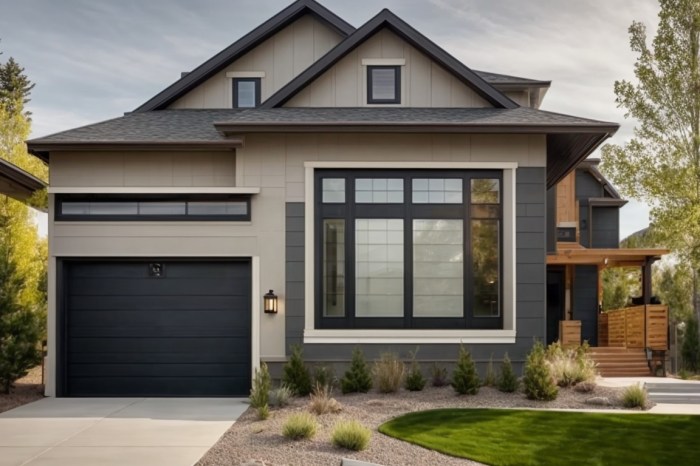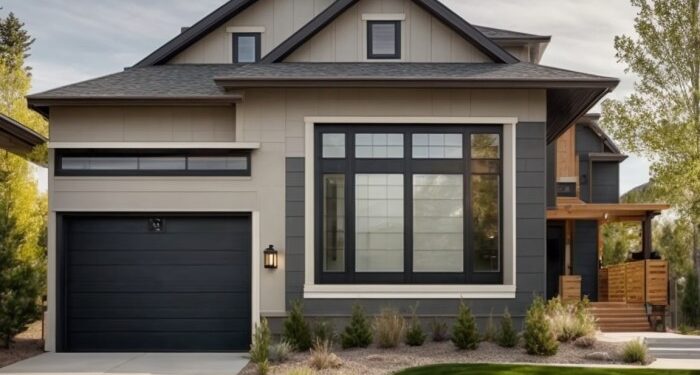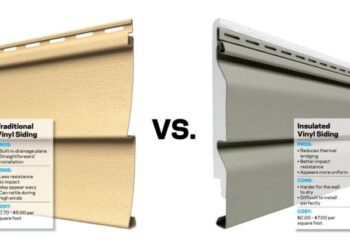Exploring the realm of Climate-Resistant Siding Solutions for Coastal Homes opens up a world of possibilities for homeowners looking to protect their beachfront properties from the elements. From durable vinyl to sturdy fiber cement, this guide delves into the various siding options available and the benefits they offer in withstanding the harsh coastal weather conditions.
 When it comes to choosing siding for coastal homes, considering the environmental impact of different materials is crucial. The siding you select can have a lasting effect on the ecosystem and sustainability of your home.
When it comes to choosing siding for coastal homes, considering the environmental impact of different materials is crucial. The siding you select can have a lasting effect on the ecosystem and sustainability of your home.
Types of Climate-Resistant Siding
When it comes to selecting siding materials for coastal homes, it is essential to choose options that can withstand the harsh weather conditions typically found in these areas. Here, we will discuss different types of climate-resistant siding materials suitable for coastal homes and compare their durability in such environments.Vinyl Siding
Vinyl siding is a popular choice for coastal homes due to its durability and low maintenance requirements. It is resistant to moisture, salt, and harsh winds, making it an excellent option for areas prone to severe weather conditions. Additionally, vinyl siding is available in a wide range of colors and styles, allowing homeowners to customize the look of their homes while still ensuring protection against the elements.Fiber Cement Siding
Fiber cement siding is another excellent choice for coastal homes, known for its strength and resistance to rot, insects, and fire. This type of siding is made from a mixture of cement, sand, and cellulose fibers, providing a sturdy and durable option for homes in coastal areas. Fiber cement siding is also resistant to moisture and salt, making it a reliable choice for withstanding the challenges of coastal weather.Engineered Wood Siding
Engineered wood siding offers the natural aesthetic of traditional wood siding without the drawbacks of susceptibility to rot and insects. This type of siding is engineered to be more durable and resistant to moisture, making it a suitable option for coastal homes. Engineered wood siding is available in various finishes and styles, providing homeowners with the flexibility to achieve the look they desire while ensuring protection against the coastal elements.Installation Considerations
When installing climate-resistant siding in a coastal area, several key factors must be taken into consideration to ensure a secure and long-lasting installation that can withstand the harsh coastal elements. One of the most critical aspects of the installation process is proper sealing and weatherproofing to protect the siding from moisture, saltwater, high winds, and other environmental factors commonly found in coastal regions.Proper Sealing and Weatherproofing
It is essential to properly seal all joints, seams, and edges of the siding to prevent water infiltration and damage. Use high-quality sealants and weatherproofing materials that are specifically designed for coastal environments. Additionally, consider installing a weather-resistant barrier behind the siding to provide an extra layer of protection against moisture.- Ensure all flashing and trim pieces are securely fastened and properly sealed to prevent water intrusion.
- Use corrosion-resistant fasteners and hardware to prevent rust and deterioration over time.
- Inspect the siding regularly for signs of wear or damage, and make any necessary repairs promptly to prevent further issues.
- Consider hiring a professional contractor with experience in coastal installations to ensure the job is done correctly and to local building codes.
Maintenance Tips for Coastal Siding
Regular maintenance is crucial for ensuring the longevity and performance of climate-resistant siding in coastal regions. By following proper maintenance practices, homeowners can protect their siding from the harsh effects of saltwater exposure and high humidity.Maintenance Requirements for Different Siding Materials
- Vinyl Siding: Regularly clean with a mixture of mild soap and water to remove salt residue. Inspect for any cracks or damage that may allow moisture to seep in.
- Fiber Cement Siding: Check for signs of water penetration or mold growth. Repaint or seal any areas with chipped paint to prevent moisture damage.
- Wood Siding: Apply a fresh coat of sealant or paint every few years to protect against moisture and salt exposure. Sand down any rough spots to prevent water buildup.
Benefits of Regular Maintenance
- Prevents corrosion and rot caused by saltwater exposure.
- Extends the lifespan of siding materials by protecting them from weather damage.
- Maintains the aesthetic appeal of the home by keeping siding clean and well-maintained.
Best Practices for Cleaning and Preserving Siding
- Use a soft brush or cloth to clean siding to avoid scratching the surface.
- Avoid using harsh chemicals or power washers, as they can damage the siding material.
- Inspect siding regularly for any signs of damage or wear and tear, and address them promptly.
Environmental Impact of Siding Choices
 When it comes to choosing siding for coastal homes, considering the environmental impact of different materials is crucial. The siding you select can have a lasting effect on the ecosystem and sustainability of your home.
When it comes to choosing siding for coastal homes, considering the environmental impact of different materials is crucial. The siding you select can have a lasting effect on the ecosystem and sustainability of your home.
Sustainability of Various Siding Materials
- Wood: While wood siding is a natural and renewable resource, deforestation for its production can harm ecosystems. Opting for reclaimed or sustainably sourced wood can mitigate this impact.
- Vinyl: Vinyl siding is durable and low-maintenance, but its production releases toxic chemicals into the environment. Proper disposal at the end of its lifespan is essential to prevent further harm.
- Fiber Cement: Made from a combination of cement, sand, and cellulose fibers, fiber cement siding is durable and eco-friendly. However, the production process can still have environmental repercussions.
- Composite: Composite siding blends various materials for a more sustainable option. Recycled content and reduced waste in manufacturing make it a greener choice for coastal homes.
Eco-Friendly Options for Climate-Resistant Siding
- Recycled Materials: Opting for siding made from recycled content helps reduce the demand for new resources and minimizes waste in landfills.
- Bamboo: Bamboo siding is a rapidly renewable resource that grows quickly and requires minimal pesticides or fertilizers. It is a sustainable and eco-friendly choice for coastal homes.
- Cork: Cork siding is harvested from the bark of cork oak trees, allowing the trees to regenerate and continue absorbing carbon dioxide. This eco-friendly option provides excellent insulation and durability.







